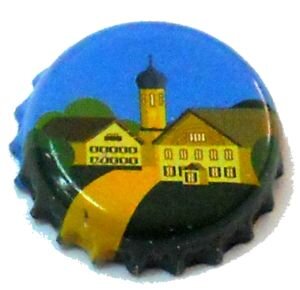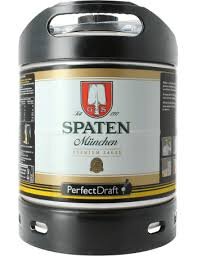I’ve got an Irish surname, but as Bruce Willis’ character Butch from Pulp Fiction so succinctly put it: “I’m American, honey. Our names don’t mean shit.” My grandmother always told us that we were ‘Heinz 57’ whenever we inquired about our family lineage; 57 varieties of (presumably?) white folks. That’s probably true of most of us in the United States and beyond (the 57 varieties, not necessarily the white folks part). Humans tend to mix together with others of varied and disparate descent to become something that is unique yet highly universal. I think it’s fair to say that none of us truly know all of the parts that make up our whole, but most of us think that we have some idea of where our family origin lies, at least in part. Your surname is definitely a good indicator of where at least part of your family hails from, but in my case even my relatives who immigrated from Ireland to the US were descended from people who immigrated to Ireland from Germany. That, along with some other family genealogy that has been well documented, illustrates that I am probably of around 50% German descent, with some Norwegian, Finnish, English and Irish thrown in for good measure. A lot of us who hail from the Northern parts of Wisconsin and Minnesota can reliably trace our Norwegian or Finnish ancestry only because the majority of those ancestors immigrated here in the early 1900s.
Beer in the USA is a great parallel to our human lineages. With the explosion of craft breweries and beer in general in this country, you see breweries here taking the known brewing traditions of the Europeans who many of us are descended from and expanding upon their basic form; sometimes with great results, and sometimes leaving your palate in the dust. For years, when most American craft brewers brewed a classic style like an ale or pilsner, they backed up the truck from the cascade hop farm and let it rip, imparting mostly that flavor and burying most of the other ones. That’s cool. I personally don’t want to drink it, but it’s cool to push the envelope and take something to the nth degree. Often, when you push the boundaries of something you arrive somewhere new and unexpected, hopefully with pleasing results. The problem is, many people (and brewers are some of the chief offenders) jump ahead to the step where they make the ‘innovative’ product without first learning how to make a perfect version of what came before. That’s problematic. In most forms of art or craft it is pretty much universally accepted that you can’t make an appreciable innovation or improvement without succinct knowledge of the original.
So, long story longer, I thought it would be fun to take a little tour of the country that a lot of people consider the epicenter of good beer; Germany. See what I did? I’m writing! Writers tie stuff together and stuff!
I think my willingness to drink just about any German beer belies what I’ve learned in drinking wine; find a region that you like and learn the styles (grapes in the example of wine) that appeal to you. I have had really good success in that manner, even as my tastes have changed. Early on in my wine game I would gravitate towards Australian wine because all of the versions available to me had a similar quality; they were sweet and jammy from the intense Aussie sun and the vines were mostly of new world varietals that did not have the complexities of some of the older vine, European wines. Weather conditions are a huge part of the wine equation no matter what varietal of grape you grow. Ever tasted some of the wines produced made from grapes grown here in the Upper Midwest? The quality of those that I have tried can be described in terms ranging from passable to downright diabolical. The weather here isn’t like France, and it for damn sure isn’t like Italy, so no amount of old world vine is going to make up for the differing amount and quality of sunlight or the completely different soil and growing conditions. Beer is an almost complete departure from this idea. Poor quality ingredients in beer are definitely going to lower the quality of the end product, but not in the same way that it would with grapes and ultimately wine. The grains and hops to brew beer are not all created equal, to be sure, but since the process of brewing beer is so completely different from that of making wine, you end up with much less of the nuance and actual flavor of the grain. In other words, you’re actually tasting the process more than the ingredients. Give the master brewers at Ayinger or G. Schneider & Sohn the exact same grains and hops that our old pals Budweiser use and see which lager is better. Even though the Germans might be appalled at using rice (the main ingredient Budweiser uses) as the grain for the recipe, their process would probably yield a higher quality result. So, when I talk about liking regions for brewing beer (and this is mostly true in Europe, less so in the ‘States), I gravitate towards them for their brewing traditions. Beyond just the traditions of brewing great beer, the Germans have for centuries written laws to protect the quality of their beer. Written by Bavarian noblemen in the year 1516, The Bavarian Purity Law for beer says only water, barley and hops may be used to brew beer. Yeast was added to this list, later known as the beer purity law or Reinheitsgebot, when scientists discovered the fermenting agent centuries later. Beer was of great importance to the Germans, as it was a main food staple and also a source of clean, potable hydration (with the added bonus of booze). The modern version of the Reinheitsgebot is not the first attempt at steering the production of beer. It is, however, seen as the high point of several hundred years of regulatory development which was aimed at supplying the citizens with qualitatively good beer (a food staple at the time), while also regulating the prices.
OK… ENOUGH WITH THE BORING HISTORY LESSON. Let’s get into some suds, my buds.




















